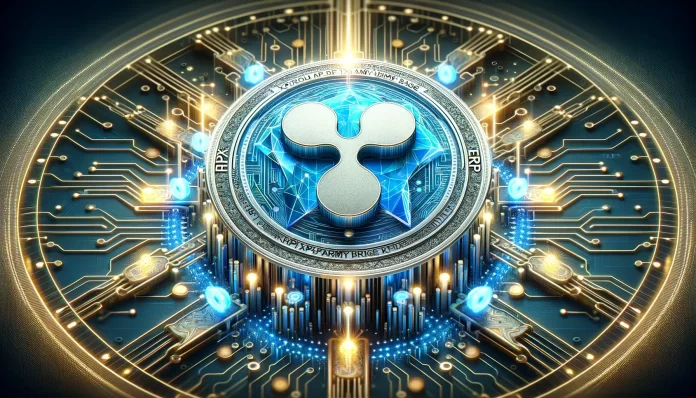- Ripple CTO David Schwartz defends XRP Ledger’s blockchain status, citing its adherence to key criteria.
- Critics question XRP Ledger’s classification due to its unique consensus mechanism, but Schwartz remains firm.
Ripple’s Chief Technology Officer (CTO), David Schwartz, recently stepped forward to address the ongoing debate surrounding the classification of XRP Ledger as a true blockchain. Amidst contentious discourse, Schwartz firmly asserts that XRP Ledger meets and exceeds the foundational criteria of blockchain technology.
I think XRPL meets the definition of a blockchain. But if people want to disagree, that’s cool too.https://t.co/RUbEAiXbQu pic.twitter.com/zZwMeEFczW
— David “JoelKatz” Schwartz (@JoelKatz) March 31, 2024
XRP Ledger: Blockchain or Distributed Ledger?
The debate over XRP Ledger’s classification stems from its unique consensus mechanism, the Ripple Protocol Consensus Algorithm (RPCA). Critics claim this approach departs from the decentralized character of conventional proof-of-work (POW) or proof-of-stake (POS) blockchains since it depends on a set of trustworthy validators. Some even go so far as to say that the XRP Ledger is a distributed ledger rather than a blockchain.
One of the main developers of the XRP Ledger, Schwartz, has maintained that XRP is a blockchain. The definition of a blockchain, as stated in his 2018 blog post, is “a series of states of a distributed ledger where each state, except the first, contains a secure reference to the prior state and sufficient information to demonstrate that the transition from that prior state is valid according to the system’s rules.”
He uses this definition to support his point. In contrast to a distributed ledger, which is not backed by a single authoritative copy, a blockchain uses its structure to preserve data integrity. Despite Schwartz’s explanation, critics’ skepticism regarding XRP’s blockchain classification persists. However, Schwartz remains indifferent to dissenting opinions, stating, “But if people want to disagree, that’s cool too.”
XRP Ledger Boosts Interoperability with New Bridge Version
In a related development, the XRP Ledger (XRPL) takes a significant leap forward in its quest for greater interoperability by releasing a new bridge version for its Ethereum Virtual Machine (EVM) sidechain. This improvement, made possible by Peersyst and Ripple collaborating, is significant for the XRPL ecosystem.
The recent bridge version offers a scalable interface to satisfy the XRP Ledger’s changing interoperability requirements. This improvement makes it possible to link the XRPL to many networks seamlessly and create unique wallets for each network. It is noteworthy because it allows networks with existing bridges to the XRPL to add more wallets.
Users can establish dynamic bridges for any ERC20/IOU token with the updated bridge. This feature opens the door for permissionless apps that can function with various assets on several blockchains. The XRP Ledger’s adaptability will enhance its liquidity and usability, solidifying its leadership in cross-border payments and asset transfers.
📢 Exciting milestone reached on the #EVMSidechain!
We are very excited to release the new version of the bridge ↕️ with a new scalable interface for future #XRPLedger interoperability 🌐
🛜 Adapted for multiple networks
💳 Adapted for multiple wallets (for each network)
🪙… pic.twitter.com/uUu5OPThyp— Peersyst Technology (@Peersyst) March 28, 2024
Through a multi-phase activity led by Peersyst and Ripple, the XRPL EVM sidechain’s development gradually advances. The sidechain’s basis was established during the first phase, which was started on the XRPL devnet in October 2022. To enable wider involvement and scalability testing in a controlled setting, phase two subsequently included a permissionless EVM sidechain connected to the XRPL devnet using a special bridge architecture. As of the time of writing, XRP is currently trading at $0.6 with a 2% decline. Additionally, the 24-hour volume is $1.3B, with a 24-hour increase of 30%.
Credit: Source link






















 Bitcoin
Bitcoin  Ethereum
Ethereum  XRP
XRP  Tether
Tether  Solana
Solana  USDC
USDC  Dogecoin
Dogecoin  Cardano
Cardano  Lido Staked Ether
Lido Staked Ether  TRON
TRON  Wrapped Bitcoin
Wrapped Bitcoin  Wrapped stETH
Wrapped stETH  Chainlink
Chainlink  Avalanche
Avalanche  Sui
Sui  Stellar
Stellar  Litecoin
Litecoin  Shiba Inu
Shiba Inu  Toncoin
Toncoin  Hedera
Hedera  LEO Token
LEO Token  USDS
USDS  Hyperliquid
Hyperliquid  Polkadot
Polkadot  WETH
WETH  MANTRA
MANTRA  Bitcoin Cash
Bitcoin Cash  Ethena USDe
Ethena USDe  Bitget Token
Bitget Token  Wrapped eETH
Wrapped eETH  Uniswap
Uniswap  Monero
Monero  NEAR Protocol
NEAR Protocol  Pepe
Pepe  WhiteBIT Coin
WhiteBIT Coin  Aave
Aave  Ondo
Ondo  Bittensor
Bittensor  Aptos
Aptos  Internet Computer
Internet Computer  Dai
Dai  Official Trump
Official Trump  Ethereum Classic
Ethereum Classic  Tokenize Xchange
Tokenize Xchange  Mantle
Mantle  OKB
OKB  Gate
Gate  sUSDS
sUSDS  Coinbase Wrapped BTC
Coinbase Wrapped BTC 
